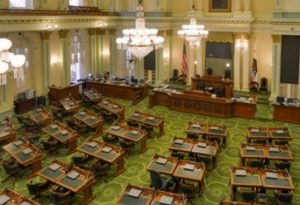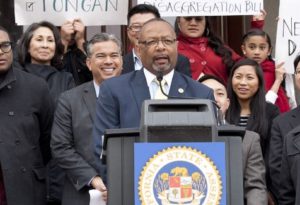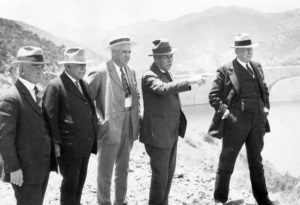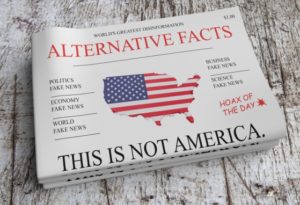Analysis
ANALYSIS: California is a solid Democratic state, Republicans in the foreseeable future have little chance of winning a statewide office, and Democratic icons Jerry Brown and Dianne Feinstein viewed more positively than negatively. But voters still want change.
Analysis
ANALYSIS: Moderate Democrats are nothing new — they have been around for decades. In the 1980’s a group of moderate Democrats called the “Gang of Five” unsuccessfully tried to unseat Speaker Willie Brown. Today, they are more organized and go by the name, “New Democrats.” Generally, a New Democrat is one who, like Republicans, is business-friendly on some key issues, such as taxes and regulation, and skeptical of some environmental controls that curtail economic growth.
Analysis
ANALYSIS: During the budget negotiations in September, there was talk in the Capitol about whether it was proper – or even legal – for California lawmakers to pass two measures amending the state budget that had been adopted three months earlier. These two bills, known as “junior” budget bills, were approved along with a half-dozen budget trailer bills making numerous policy changes in state law for the 2017-18 fiscal year. Gov. Brown signed them all.
Analysis
Meet the progressives, an outgrowth of California’s Democratic political landscape. As Democrats began their dominance in California over 20 years, they saw their electoral success expand out of urban centers into wealthier suburban enclaves, such as Pasadena, Calabasas, and Walnut Creek.
Analysis
In 1987, when Mark Reisner published his book Cadillac Desert, I had just begun professing on water management. The book went “viral,” before the word viral had its present-day internet-intoxicated meaning. The book offered a compelling revisionist history and understanding of water development in the American West, based on economic self-interest, ideology, and Floyd Dominy’s personal drives.
Analysis
ANALYSIS: California’s independent Citizens Redistricting Commission was established by two ballot measures in 2008 and 2010, following several unsuccessful pushes by Republicans who saw themselves as perpetually sidelined when it came to drawing the state’s political boundaries. Success came when they were joined by a coalition of non-partisan groups and deep-pocket Silicon Valley funders, who saw the commission as a part of overall reforms, like the creation of an open primary.
Analysis
Friday, June 2 represented the Legislature’s house-of-origin deadline. To stay alive, Assembly bills were required to have passed out of the Assembly and Senate bills had to have been passed out of the Senate. During Assembly floor debate, the issue was repeatedly raised whether the Assembly had properly complied with the provisions of Proposition 54, which California voters approved in November as a transparency measure.
Analysis
Over the years, there have been myriad misconceptions about different aspects of state law making. So let’s hold our breath, take a deep dive into the Capitol and separate the myths from the reality. Later, we’ll look at committees, the governor, special sessions, floor actions and the like.
Analysis
OPINION: Writing in The New York Times, John McWhorter, an assistant professor of English at Columbia, tells a tale about the Kuma tribe in Panama. The Kuna chief gives a speech in elevated language, and then an assistant tells the crowd what the chief has just said. We may like to think of ourselves as an advanced civilization compared to a trtibe in Panama, but today’s spokespeople for politicians are doing the same thing. And one of them has just invented “alternative facts.”
Analysis
When a bill in the California Legislature fails passage either in committee or on the floor of the Assembly or Senate, it can be granted “reconsideration.” That can mean a bill gets a new lease on life — or not.










